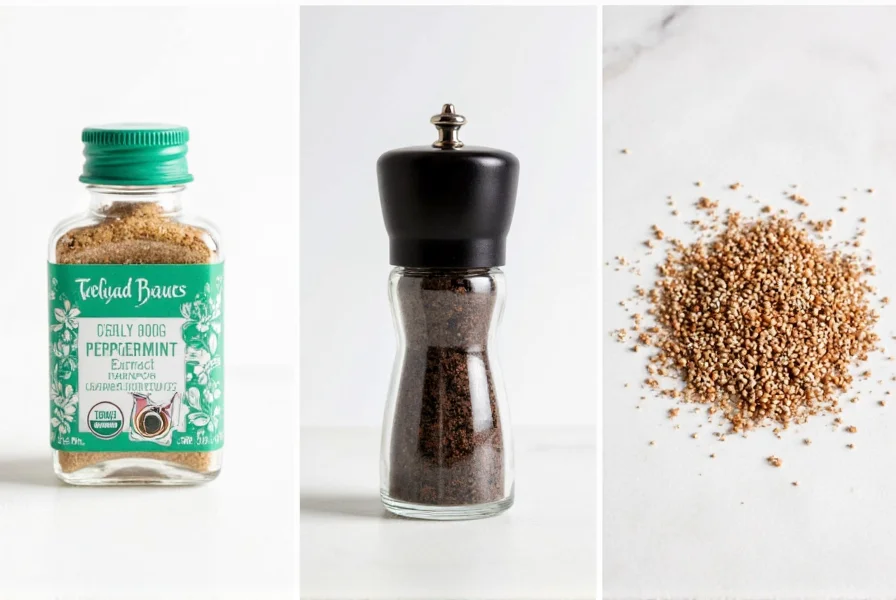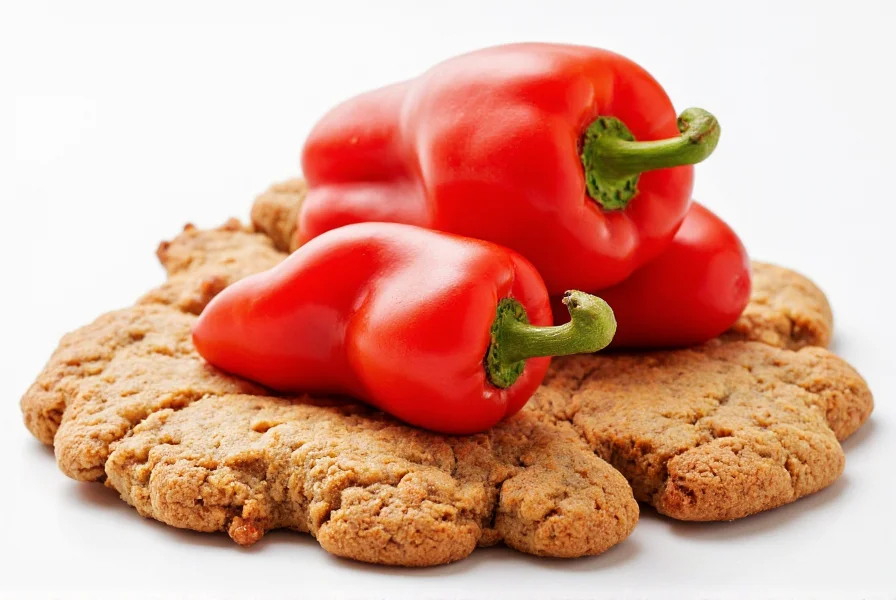Cookie pepper is not a recognized culinary ingredient or standard baking term. This appears to be a common confusion between cookie-related terminology and pepper varieties, or possibly a misspelling of peppermint cookie ingredients.
When home bakers search for "cookie pepper," they're typically encountering a terminology mix-up. Understanding this confusion requires examining both baking fundamentals and common linguistic errors that occur in recipe searches. Let's clarify what cookie pepper isn't, what searchers might actually need, and how to navigate similar culinary terminology challenges.
Why Cookie Pepper Doesn't Exist as a Standard Ingredient
Traditional cookie recipes rarely incorporate actual peppers. While some specialty recipes might use black pepper for subtle complexity in certain spice cookies, this is uncommon and never referred to as "cookie pepper." Peppers (Capsicum family) generally contain capsaicin, which creates heat that conflicts with sweet cookie profiles.
Professional bakers confirm that no standardized ingredient called "cookie pepper" appears in culinary textbooks, baking supply catalogs, or professional recipe databases. The confusion likely stems from several common linguistic mix-ups:
| Confused Term | Actual Meaning | Frequency of Confusion |
|---|---|---|
| Cookie pepper | Non-existent term | High in search queries |
| Peppermint extract | Mint flavoring for cookies | Most common actual need |
| Cookie sprinkles | Decorative cookie toppings | Moderate confusion |
| Pepper in spice cookies | Occasional black pepper use | Low but valid application |
Common Sources of the Cookie Pepper Confusion
Peppermint vs. Pepper Mishearing
The most frequent mix-up occurs between "peppermint" and "pepper." Many baking recipes call for peppermint extract in holiday cookies, particularly:
- Peppermint chocolate chip cookies
- Peppermint bark cookies
- Peppermint thumbprint cookies
When spoken aloud, "peppermint" can sound similar to "pepper mint," leading some to search for "cookie pepper" when they actually need peppermint flavoring.
Cookie Sprinkles Misidentification
Some searchers might be referring to decorative cookie toppings. While no "pepper" sprinkles exist, certain colorful sprinkles could be misidentified:
- Black decorating gel that resembles pepper
- Black sesame seeds used in some Asian cookie recipes
- Crushed black sesame cookies sometimes mistaken for pepper
Specialty Spice Cookie Applications
While uncommon, some sophisticated cookie recipes incorporate black pepper for complexity:
- Black pepper shortbread (popular in Scandinavian baking)
- Pepper-infused chocolate cookies
- Certain gingerbread variations with pepper notes
These recipes specifically call for "freshly ground black pepper" or "cayenne pepper," never "cookie pepper."

What to Use Instead of Cookie Pepper
If you're searching for cookie pepper, you likely need one of these actual ingredients:
For Mint-Flavored Cookies
Use high-quality peppermint extract (not mint extract, which is weaker):
- Start with 1/4 teaspoon per dozen cookies
- Adjust to taste before baking
- Pair with chocolate for classic flavor combinations
For Decorative Toppings
Cookie decorating alternatives:
- Colored sugar sprinkles
- Edible glitter
- Crushed candy canes (for mint flavor)
- Black sesame seeds for visual contrast
For Subtle Spice Notes
If you want pepper complexity in cookies:
- Use freshly ground black pepper (1/8 teaspoon max per dozen)
- Pair with complementary spices like cinnamon or cardamom
- Always bloom spices in melted butter before incorporating

Preventing Future Terminology Confusion
To avoid similar baking term mix-ups, consider these strategies:
- Verify spelling of ingredients before searching
- Include context words like "recipe" or "ingredient" in searches
- Check multiple recipe sources for consistency
- Consult culinary dictionaries for unfamiliar terms
- Understand that "pepper" typically refers to Capsicum varieties or black pepper
When in doubt about baking terminology, reputable culinary institutions like the Culinary Institute of America or King Arthur Baking Company maintain comprehensive ingredient glossaries that can clarify confusing terms.
When Pepper Actually Belongs in Cookies
While "cookie pepper" isn't a thing, certain pepper varieties do enhance specific cookie recipes:
- Black pepper - Adds warmth to chocolate or ginger cookies
- White pepper - Milder alternative for delicate cookies
- Pink peppercorns - Decorative and mildly spicy for shortbread
- Cayenne - Tiny amounts in chocolate cookies for complexity
Professional bakers recommend starting with minimal amounts (1/16 to 1/8 teaspoon per dozen cookies) and adjusting based on taste tests with raw dough (where safe). Always grind peppers fresh for maximum flavor impact in cookie applications.











 浙公网安备
33010002000092号
浙公网安备
33010002000092号 浙B2-20120091-4
浙B2-20120091-4